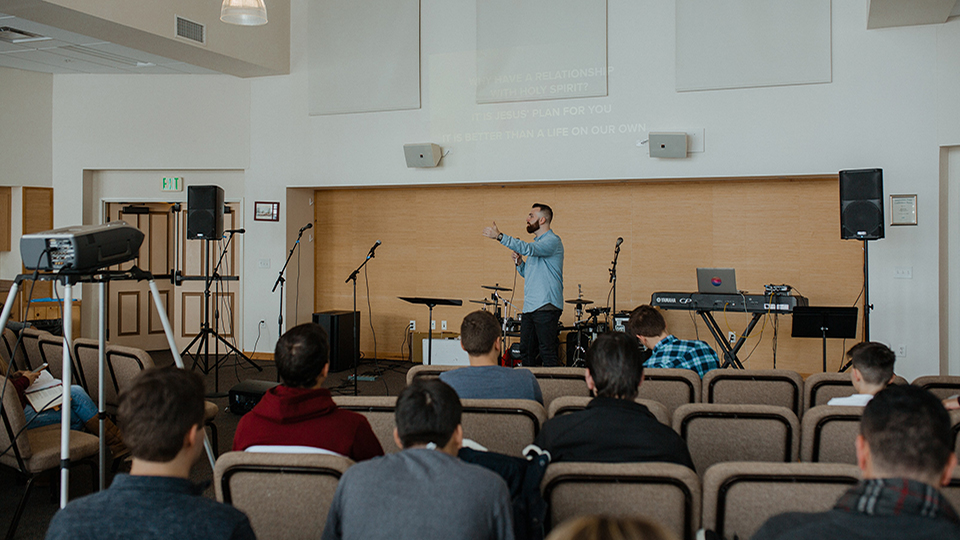
Today, there seem to be more and more articles and books either defending or castigating local churches on the issue of their size. Some applaud the large church in such a way that the smaller church seems unnecessary and without a future, while others defend the merits of the small church and treat the larger congregation with contempt and suspicion. It seems we are determined to find a side to fight for somewhere between the house churches of Acts 2 and the massive modern churches in Southeast Asia.
Is this a fight worth fighting? Is there a “right” size for local congregations or is one better than the other? In this blog, Dr. Mike Clarensau expounds on the matter.
Churches have come in a variety of sizes from the beginning.
While I’m not sure of the Early Church’s full facilities plan, the Day of Pentecost presented a large church challenge in its first altar call. At the same time, small gatherings of believers seem to crop up all across the Ancient Near East, some the result of the scattering of individual believers and some the result of larger evangelistic opportunities in the town square.
“So if various size churches have always been a part of the kingdom, why the need to prefer one over the other today? Perhaps the answer lies in the different ideas of the Church’s primary task.”
As I travel, I see some churches that believe strongly in the mission to reach lost people, while others seem to focus more on the deeper development of those already in the room. Some see the church as an organization while others prefer the imagery of family. Some are growing numerically, while some who aren’t insist that they are more spiritual.
Now a debate of this magnitude won’t be solved in a single blog (or even a dozen), but here’s a couple of observations that might inform the debate.
Observations
1. It seems that the more focused a church becomes on its true mission, the more they want what the other size has.
A smaller church that begins prioritizing its mission usually begins narrowing its focus, pursuing an outward vision, and reaching for greater excellence (the priorities of the larger church), while the larger church begins seeking greater intimacy in personal relationships and deeper discipleship development (the elements more often in reach of the smaller church).
Our task is both sides of this coin. You see, the Biblical purposes of the Church encompass multiple elements. We are to evangelize the world, we are to guide people in worshipping God, we are to love one another and equip one another for acts of service, and we are to give our resources for the needs of others. The large church usually does a couple of these better than the small church, while the small church often does the others better.
I get nervous when people reject numbers out of hand and I believe others give them too much emphasis. I believe God counts, and I know He writes down every name. He also leaves the 99 to chase after the one and even has your follicles calculated. That doesn’t mean that He judges greatness by numbers. In fact, He told us He judged greatness by servanthood–something I’ve seen both big and small churches do well and others do poorly.
2. Church size often reflects the capacity of people and leaders to manage a multitude.
These folks are effective at generating various types of resources and mobilizing them effectively. It can also reflect harvest timing as the seeds sown by previous generations in both prayer and evangelism can open the way for a larger harvest today. Big churches don’t get big by their programs (a common criticism from the smaller church), they get bigger by their shared passion and abilities to focus that passion effectively. Their programs are more often the tools discovered to preserve and manage their impact.
Smaller churches can have that same passion, but many have misplaced it. Many of these have become focused on themselves and built their church around the comforts of those who worship there. So sadly, they are left to either change or criticize those who do. The latter is a lot easier.
A larger church can face the same struggle. No attendance level will keep a church without vision and outward focus from decline. The same self-focused attitudes will crumble the large church too–it just may take a little longer since the peak was a little higher than in the smaller setting.
Bottom-line: Pursue God’s vision in your church and aim your hearts outward and you’ll have no reason to debate the church size issue.
Remember that the Church is about “Him and them,” and when we focus our thoughts upward and outward, God takes amazing care of us and our needs. Aim upward and outward and God will empower you and help your church become what He’s intended it to be. And the size of that result may be smaller than you figured or bigger than you imagined.
You don’t judge a church by its size. YOU JUDGE IT BY ITS HEART!
Want more ThoughtHub content?
Join the 3000+ people who receive our newsletter.
*ThoughtHub is provided by SAGU, a private Christian university offering more than 60 Christ-centered academic programs – associates, bachelor’s and master’s and doctorate degrees in liberal arts and bible and church ministries.



